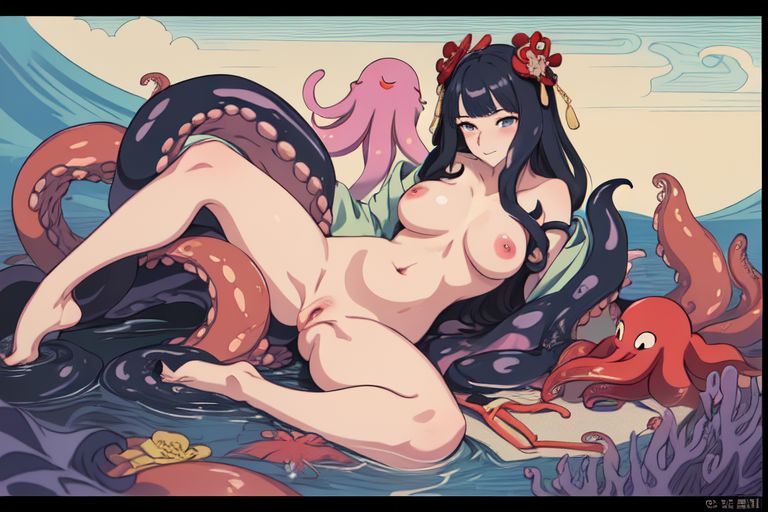Tentacle hentai is one of the most unique and controversial subgenres within adult animation and manga. With its deep roots in Japanese history and a significant presence in modern pop culture, it has fascinated and intrigued audiences worldwide. This article will explore the origins, evolution, cultural impact, and controversies surrounding tentacle hentai, aiming to provide an informative and balanced perspective on this niche genre.
Table of Contents
The Origins of Tentacle Hentai
The origins of tentacle hentai can be traced back to classical Japanese art and literature. One of the earliest depictions comes from the 1814 ukiyo-e woodblock print “The Dream of the Fisherman’s Wife” by Katsushika Hokusai. This artwork portrays an intimate encounter between a woman and octopuses, setting a precedent for tentacle-based erotic art.
During the 20th century, Japanese manga and anime evolved significantly, and the 1980s saw the emergence of tentacle hentai in modern media. Due to Japan’s strict censorship laws, which prohibited the explicit depiction of genitalia, artists used tentacles as a loophole to create erotic content that complied with regulations while maintaining explicit themes.
The Rise of Tentacle Hentai in Modern Media
1. The 1980s and 1990s: The Golden Age
The late 1980s and 1990s marked a boom in tentacle hentai. Works like “Urotsukidōji: Legend of the Overfiend” (1987) and “La Blue Girl” (1992) played a crucial role in popularizing the genre. These anime introduced grotesque, supernatural themes combined with explicit adult content, cementing tentacle hentai as a staple in underground anime culture.
2. The 2000s to Present: Digital Evolution
With the advent of the internet and digital animation, tentacle hentai became more accessible to a global audience. Websites and online forums dedicated to hentai allowed fans to share and discuss content, contributing to its widespread appeal. Modern tentacle hentai often incorporates advanced animation techniques and CGI, enhancing its visual quality and reach.
The Appeal and Psychology Behind Tentacle Hentai
Many wonder why tentacle hentai has gained such a significant following. The appeal lies in several factors:
- Fantasy and Supernatural Elements: The incorporation of non-human entities allows for limitless creativity, making the genre distinct from traditional adult content.
- Exploration of Forbidden Themes: Tentacle hentai provides a medium for exploring taboo subjects in a fictional setting, allowing artists and audiences to engage with themes beyond conventional boundaries.
- Artistic Expression: Japanese erotic art has a long history of blending horror, beauty, and sensuality. Tentacle hentai continues this tradition with complex storytelling and detailed animation.
- Loophole to Censorship: The genre historically served as a way to bypass censorship laws, keeping it relevant even in strict regulatory environments.
The Controversies Surrounding Tentacle Hentai
Despite its popularity, tentacle hentai remains highly controversial. Critics argue that it perpetuates harmful stereotypes, objectification, and unrealistic portrayals of intimacy. Additionally, the often violent and non-consensual themes present in some works raise ethical concerns.
From a legal standpoint, some countries have stricter regulations on hentai content, particularly concerning non-human interactions. However, supporters argue that as a purely fictional genre, it remains a form of artistic expression rather than a reflection of real-world behaviors.
Cultural Impact and Mainstream Recognition
Tentacle hentai has significantly influenced pop culture, from anime and manga to video games and Western media. Elements inspired by the genre appear in mainstream franchises, including:
- Anime and Manga: Popular titles like “Attack on Titan” and “Tokyo Ghoul” incorporate tentacle-like creatures and horror aesthetics reminiscent of tentacle hentai.
- Video Games: Games such as “The Witcher 3” and “Dark Souls” feature tentacle monsters and horror-driven narratives similar to classic tentacle hentai.
- Western Animation and Films: Western shows like “Rick and Morty” and movies like “Pacific Rim” subtly reference tentacle aesthetics in their creature designs.
The Future of Tentacle Hentai

As digital technology advances, the future of tentacle hentai is expected to evolve with improved animation techniques, immersive VR experiences, and interactive storytelling. The genre’s adaptability ensures its continued presence in adult entertainment and niche fandoms.
Conclusion
Tentacle hentai, while controversial, is an undeniable part of anime and manga history. Its origins in classical Japanese art, combined with its evolution in modern media, highlight its lasting cultural impact. Whether viewed as an artistic expression, a loophole to censorship, or a fantasy-driven genre, it continues to spark discussions worldwide. As society progresses, debates over its ethical implications and creative significance will likely continue, making it a genre that remains both fascinating and divisive.

